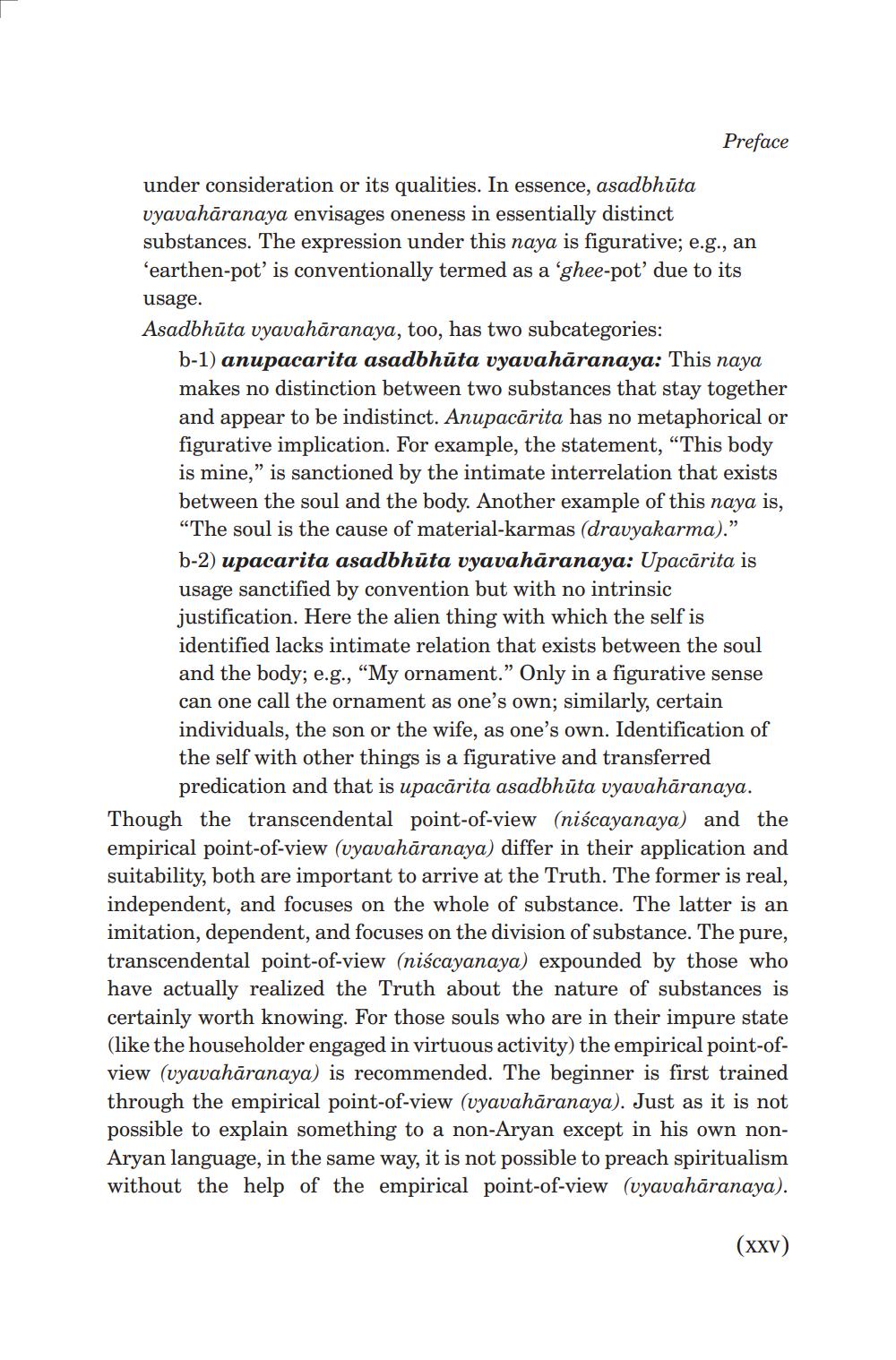________________
Preface
under consideration or its qualities. In essence, asadbhūta vyavahāranaya envisages oneness in essentially distinct substances. The expression under this naya is figurative; e.g., an ‘earthen-pot' is conventionally termed as a 'ghee-pot' due to its usage. Asadbhūta vyavahāranaya, too, has two subcategories:
b-1) anupacarita asadbhūta vyavahāranaya: This naya makes no distinction between two substances that stay together and appear to be indistinct. Anupacārita has no metaphorical or figurative implication. For example, the statement, “This body is mine," is sanctioned by the intimate interrelation that exists between the soul and the body. Another example of this naya is, "The soul is the cause of material-karmas (dravyakarma).” b-2) upacarita asadbhūta vyavahāranaya: Upacārita is usage sanctified by convention but with no intrinsic justification. Here the alien thing with which the self is identified lacks intimate relation that exists between the soul and the body; e.g., “My ornament.” Only in a figurative sense can one call the ornament as one's own; similarly, certain individuals, the son or the wife, as one's own. Identification of the self with other things is a figurative and transferred
predication and that is upacarita asadbhūta vyavahāranaya. Though the transcendental point-of-view (niscayanaya) and the empirical point-of-view (vyavahāranaya) differ in their application and suitability, both are important to arrive at the Truth. The former is real, independent, and focuses on the whole of substance. The latter is an imitation, dependent, and focuses on the division of substance. The pure, transcendental point-of-view (niscayanaya) expounded by those who have actually realized the Truth about the nature of substances is certainly worth knowing. For those souls who are in their impure state (like the householder engaged in virtuous activity) the empirical point-ofview (uyavahāranaya) is recommended. The beginner is first trained through the empirical point-of-view (vyavahāranaya). Just as it is not possible to explain something to a non-Aryan except in his own nonAryan language, in the same way, it is not possible to preach spiritualism without the help of the empirical point-of-view (uyavahāranaya).
(xxv)




